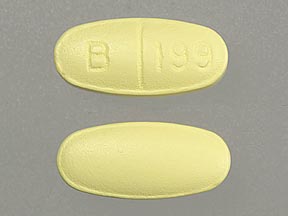Utac Disease Interactions
There are 6 disease interactions with Utac (methenamine / sodium acid phosphate).
Methenamine (applies to Utac) crystalluria
Major Potential Hazard, High plausibility. Applicable conditions: Renal Dysfunction, Dehydration
The use of methenamine salts (i.e. methenamine hippurate or mandelate), but not the base, is contraindicated in patients with severe renal impairment or dehydration. Methenamine is excreted by the kidney and concentrated in the urine. In patients with low urinary output, the salts can precipitate and cause crystalluria.
References (6)
- Klinge E, Mannisto P, Mantyla R, Lamminsivu U, Ottoila P (1982) "Pharmacokinetics of methenamine in healthy volunteers." J Antimicrob Chemother, 9, p. 209-16
- Gleckman R, Alvarez S, Joubert D, Matthews S (1979) "Drug therapy reviews: methenamine mandelate and methenamine hippurate." Am J Hosp Pharm, 36, p. 1509-12
- Australian Drug Evaluation Committee (1972) "Adverse effects of drugs commonly used in the treatment of urinary tract infection." Med J Aust, 1, p. 435-8
- (2002) "Product Information. Hiprex (methenamine)." Hoechst Marion Roussel
- (2002) "Product Information. Mandelamine (methenamine)." Parke-Davis
- American Medical Association, Division of Drugs and Toxicology (1994) "Drug evaluations annual 1994." Chicago, IL: American Medical Association;
Methenamine (applies to Utac) gout
Major Potential Hazard, Moderate plausibility.
Methenamine mandelate (salts), should be avoided in patients with gout as it may precipitate urate crystals in their urine. A similar situation may arise in patients with a predisposition to the formation of uric acid stones.
References (1)
- (2002) "Product Information. Hiprex (methenamine)." Hoechst Marion Roussel
Methenamine (applies to Utac) liver disease
Major Potential Hazard, High plausibility.
The use of methenamine and its salts (i.e. methenamine hippurate or mandelate) is contraindicated in patients with severe hepatic impairment. Methenamine is hydrolyzed to ammonia and formaldehyde in the urine under acidic conditions. Patients with liver disease may already have elevated ammonia levels, which can cause or exacerbate hepatic encephalopathy. Methenamine hippurate has also been associated with isolated cases of transient elevations in serum transaminases. The manufacturer recommends periodic liver function tests during therapy, particularly in patients with preexisting liver dysfunction.
References (5)
- Strom J, Jun H (1975) "Kinetics of hydrolysis of methenamine." Pharm Bull, 23, p. 651
- Gleckman R, Alvarez S, Joubert D, Matthews S (1979) "Drug therapy reviews: methenamine mandelate and methenamine hippurate." Am J Hosp Pharm, 36, p. 1509-12
- (2002) "Product Information. Hiprex (methenamine)." Hoechst Marion Roussel
- (2002) "Product Information. Mandelamine (methenamine)." Parke-Davis
- American Medical Association, Division of Drugs and Toxicology (1994) "Drug evaluations annual 1994." Chicago, IL: American Medical Association;
Phosphates (applies to Utac) hypocalcemia
Major Potential Hazard, High plausibility. Applicable conditions: Pancreatitis, Hyperkalemia
The use of phosphates is in general contraindicated in conditions where high potassium, high phosphate, or low calcium may be encountered such as hypoparathyroidism, osteomalacia, acute pancreatitis, or chronic renal disease.
References (2)
- (2001) "Product Information. K-Phos Neutral (potassium phosphate)." Beach Pharmaceuticals
- (2001) "Product Information. Fleet Enema (sodium acid phosphate-sodium phosphate)." Fleet
Phosphates (applies to Utac) phosphate imbalance
Major Potential Hazard, High plausibility. Applicable conditions: Hypoparathyroidism, Renal Dysfunction
Therapy with phosphates should be administered with extreme caution in patients with hyperphosphatemia (hypoparathyroidism or severe renal impairment). Elevated serum concentrations of phosphate and calcium can exceed the solubility level and result in calcium-phosphate precipitates that deposit in vascular and renal systems as well as other soft tissues of the body. Clinical monitoring of serum calcium and phosphate concentrations is necessary.
References (2)
- (2001) "Product Information. K-Phos Neutral (potassium phosphate)." Beach Pharmaceuticals
- (2001) "Product Information. Fleet Enema (sodium acid phosphate-sodium phosphate)." Fleet
Sodium salts (applies to Utac) sodium/water imbalance
Major Potential Hazard, High plausibility. Applicable conditions: Congestive Heart Failure, Hypokalemia, Fluid Retention, Hypernatremia
Sodium chloride can induce sodium and water retention and result in hypernatremia, hypokalemia, edema and aggravation of congestive heart failure. Therapy with sodium- containing agents should be administered with extreme caution, if at all, in patients with congestive heart failure, severe renal insufficiency, and in clinical states where there is edema with sodium retention. Clinical monitoring of acid/base balance and electrolytes prior to, during, a following completion of therapy with sodium- containing agents is recommended.
References (3)
- (2001) "Product Information. Megace (megestrol)." Bristol-Myers Squibb
- (2001) "Product Information. Calcibind (cellulose sodium phosphate)." Mission Pharmacal Company
- (2001) "Product Information. Sodium Benzoate (sodium benzoate)." Taylor Pharmaceuticals
Switch to consumer interaction data
Utac drug interactions
There are 77 drug interactions with Utac (methenamine / sodium acid phosphate).
Drug Interaction Classification
| Highly clinically significant. Avoid combinations; the risk of the interaction outweighs the benefit. | |
| Moderately clinically significant. Usually avoid combinations; use it only under special circumstances. | |
| Minimally clinically significant. Minimize risk; assess risk and consider an alternative drug, take steps to circumvent the interaction risk and/or institute a monitoring plan. | |
| No interaction information available. |
See also:
Further information
Always consult your healthcare provider to ensure the information displayed on this page applies to your personal circumstances.


